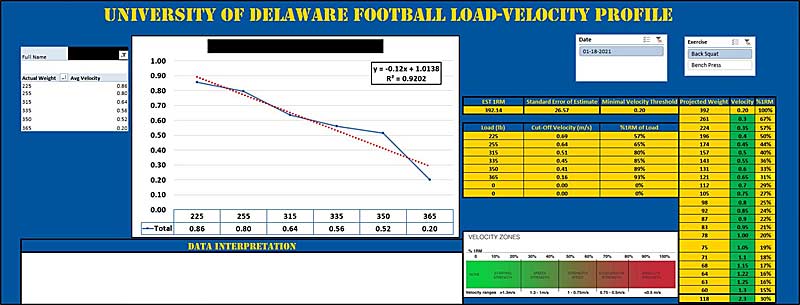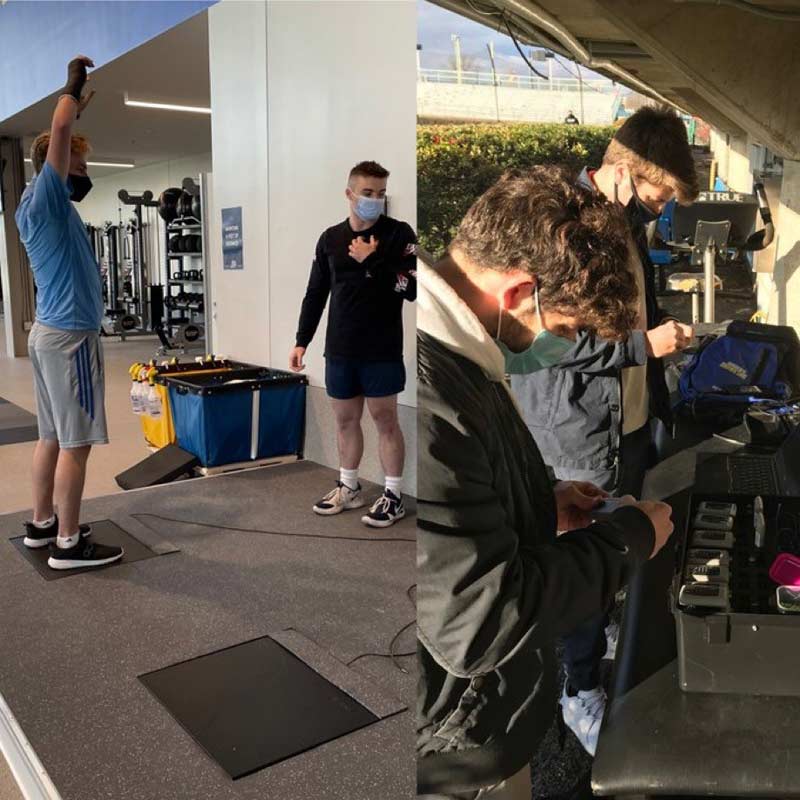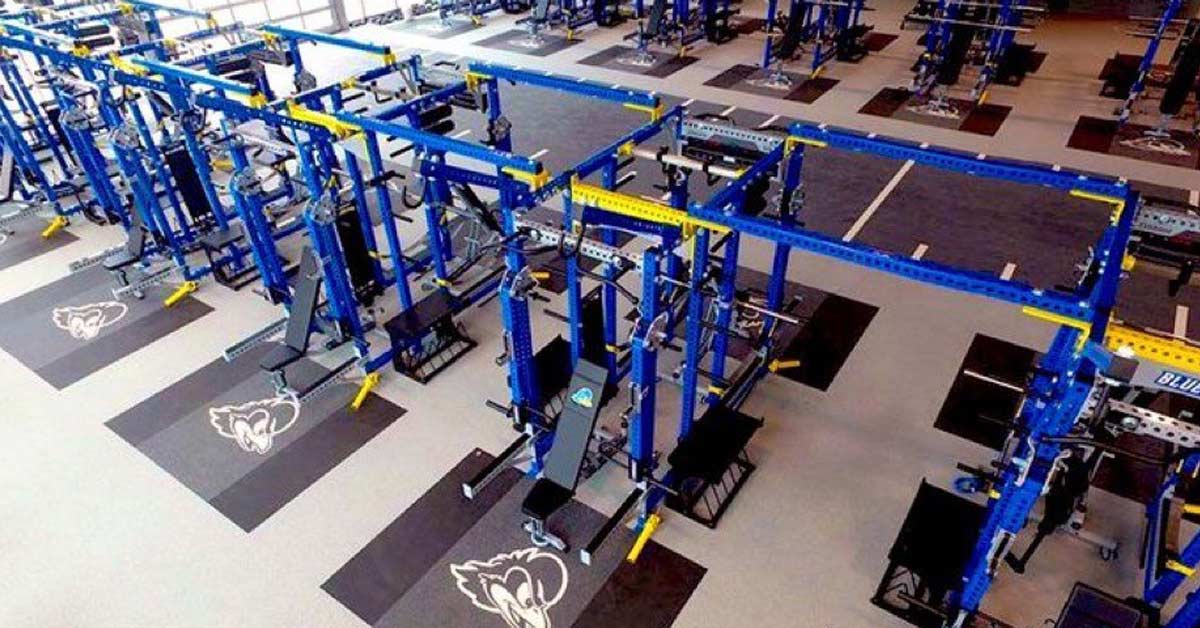Christina Rasnake is the Director of Sports Science & Analytics at the University of Delaware. She oversees UD’s 21 varsity sports teams’ data collection, analysis, and performance technology utilization. Christina provides detailed analysis to all support staff and coaching staffs to make data-informed decisions by collecting actionable data, while also serving as the Strength & Conditioning Coach for Women’s Field Hockey. Christina has been an active strength and conditioning coach for more than 10 years, working at LaSalle University, University of Pennsylvania, Bloomsburg University, Dartmouth College, and Missouri State prior to arriving at the University of Delaware. She has an MBA in Strategic Leadership from the University of Delaware, a Master of Exercise Science from Bloomsburg University, and a Bachelor of Science in Recreation Management from Lock Haven University.
Freelap USA: Data collection in team sports can be difficult and tough to navigate. What are the key principles for collecting data that is reliable?
Christina Rasnake: The key principles in collecting data for team sports are standardization, centralization, integration, and implementation. If we are going to collect data, it needs to be standardized to produce consistent records and reports. This is accomplished by identifying, locating, and describing all data sources to provide a strong level of reliability. This process helps us centralize our data by identifying errors and providing reliable and accurate interpretation of the data. Integration of the data presented in a “snapshot” view will allow for seamless access to data through a cohesive report.

The integration of all performance technology allows for the demonstration of relationships among different data sources and discrepancies among various point of views (e.g., sport coaches, athletic trainers, and strength and conditioning coaches). The implementation of the performance technology to collect data needs to be consistent, and the dashboards or reports provided to the decision-makers need to be clear and provide enough insight for questions to be asked to provide modifications or adaptations to training progression.
Freelap USA: In your experience, what are the most common mistakes made by strength and conditioning practitioners when collecting data?
Christina Rasnake: I find the most common mistake is collecting too much data. We should make our data collection specific to the sport and set certain key performance indicators (KPIs) that can be improved upon and tested frequently and with ease. Four to five KPIs can be performed routinely and tracked based on the needs of the sport.
If I am squatting weekly in the weight room, it should be one of my KPIs. If, however, I really like the 40-yard dash, but it has no relevance to the sport, I should not go out of my way to test it if there is minimal carryover. Identifying the KPIs with the help of your sport coaches and athletic trainer establishes what is important to all decision-makers and helps clarify what is important in developing athleticism in the specific sport.
Freelap USA: Deciphering data can be a long and strenuous process. What systems or workflows do you use to automate and expedite the data collection and deciphering process? What helps you read the data the quickest?
Christina Rasnake: I utilize Microsoft Excel and Power BI the most in my cleaning and interpretation of data. I have created macros that automatically clean my raw data and then I utilize Power Query in Excel to make the data look the way I want. This automatically updates with my Dashboards.
The Dashboards take time to create on the front end, but once they are a finished product, I can run this workflow seamlessly to send reports quickly and efficiently. Conditional formatting and organization of my tables and charts within the Dashboard allow me to see specific red flags I have set in advance so I can provide concise and meaningful data analysis.
Freelap USA: We live in an age of information overload. What advice would you give coaches who are attempting to figure out what data to collect?
Christina Rasnake: Start small and basic. (K.I.S.S.) However you do it, keep it simple and consistent. Compliance and consistency are what keep you in line with your plan, without falling into information overload. Best practices in data collection and in preparing your training progression should always be based on the demands of the sport. Don’t collect it because that coach and school down the road does; collect what works for you, your staff, and the team you are trying to prepare for competition.

Performing research on the energy and movement demands of the sport should be your first step in figuring out what to assess. The second step is to watch the sport and see what is happening on the court or field. The third step is to speak with your sport coach to learn what type of system or tactics they use in competition, their practice intensity each day of the week (e.g., Tuesday is our hard day and Friday is a walk-through), and what they want to learn from the data you are collecting, whether on the field, on the court, or in the weight room.
Freelap USA: Data collection that does not eventually lead to intervention can be a waste of resources. What strategies do you and your staff use to extrapolate the data to guide training implementation?
Christina Rasnake: Our sport performance team (athletic trainers, strength and conditioning coaches, performance nutrition, and sport psychology) utilizes the reports provided to them during weekly meetings. These meetings do not need to be formal sit-down meetings but can be phone calls, emails, or sideline chats at practice.
We also hold monthly care meetings that focus solely on the student-athlete. The meeting attendees are the sport performance team, academics, and sport coaches. We focus holistically on creating an environment for the student-athlete to be the best version of themselves each day and utilize all reports and dashboards that are provided to create plans and action items for specific staff members to administer.
Since you’re here…
…we have a small favor to ask. More people are reading SimpliFaster than ever, and each week we bring you compelling content from coaches, sport scientists, and physiotherapists who are devoted to building better athletes. Please take a moment to share the articles on social media, engage the authors with questions and comments below, and link to articles when appropriate if you have a blog or participate on forums of related topics. — SF




